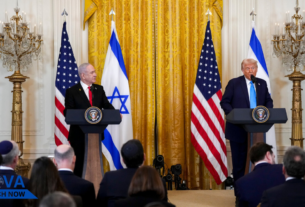M23 rebels, backed by Rwanda, have captured Goma, the second-largest city in the eastern Democratic Republic of Congo (DRC), following intense clashes. The city, located near the border with Rwanda, fell into rebel hands on Monday after days of fighting between government forces and the rebels. The fall of Goma marks a significant shift in the region’s balance of power, raising fears of further instability.
“We are now in control of Goma,” a spokesperson for the M23 group confirmed. The capture of the city is a major victory for the rebels, who have been fighting the DRC government for control of territory in the east for several years. The M23 has historically received support from Rwanda, although Kigali denies direct involvement.
The city of Goma, home to around 2 million people, has been a focal point in the ongoing conflict between the DRC and various armed groups. It is strategically important due to its proximity to Rwanda and Uganda, as well as its role as a hub for humanitarian aid. With Goma now under rebel control, there are concerns about the impact on aid distribution and local safety.
Residents of Goma fled in fear as M23 rebels advanced, with reports of widespread panic in the streets. “We had no choice but to leave,” said a local shopkeeper. Many are now seeking refuge in neighboring towns or in areas controlled by the DRC military. The capture of Goma adds to the growing number of displaced people in the region, where over 5 million people have been forced to flee due to ongoing conflict.
The DRC government has condemned the takeover, calling it an act of aggression. President Félix Tshisekedi vowed to retake the city and restore order. The United Nations, which has a peacekeeping mission in the DRC, has expressed concern about the humanitarian crisis and the escalation of violence in the area.
Regional actors have reacted with alarm, as the M23’s success in Goma threatens the fragile peace that has held in eastern Congo for several years. Neighboring Uganda and Burundi have voiced concerns over the potential spillover of violence. They also fear the further destabilization of the Great Lakes region, which has been plagued by ethnic conflicts and militia groups for decades.
The DRC has accused Rwanda of supporting the M23 rebels, a charge Rwanda has consistently denied. Diplomatic tensions between the two countries have escalated in recent years, and the situation in Goma has only deepened mistrust. International observers have called for a diplomatic resolution to the conflict but have acknowledged that achieving peace will require significant changes in the region’s political dynamics.
The fall of Goma highlights the ongoing struggle for control in eastern DRC, where various rebel groups and militias operate with relative impunity. The government has struggled to assert control over these areas, despite the presence of U.N. peacekeepers and regional efforts to stabilize the region. The future of Goma and the surrounding areas remains uncertain, as fighting is expected to continue.
The international community has called for an immediate ceasefire and negotiations between the DRC government and the M23 rebels. However, with tensions running high, it is unclear whether such talks will take place. For now, the people of Goma and the surrounding regions face an uncertain future, as they wait to see what will happen next in this ongoing conflict.



